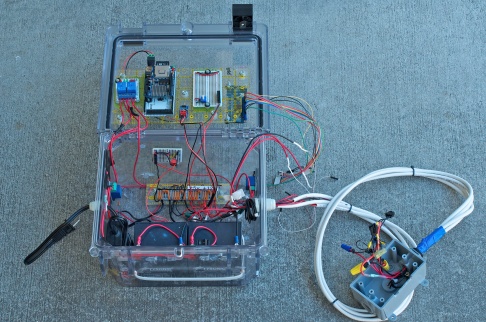It seems like it’s actually working in this 45Ks (nearly 13 hours) run:
 This is Box B, so it’s nice to see that it’s doing ok. The point here is that the batteries are handing off to each other smoothly. Note that if the bus battery runs out of power, it does a bunch of very short pumping cycles (see from 20-23Ks). This isn’t very effective, I don’t think, but it’s still probably the preferred behavior.
This is Box B, so it’s nice to see that it’s doing ok. The point here is that the batteries are handing off to each other smoothly. Note that if the bus battery runs out of power, it does a bunch of very short pumping cycles (see from 20-23Ks). This isn’t very effective, I don’t think, but it’s still probably the preferred behavior.
One slightly worrisome note: I’m clearly not sensing the charging cycle correctly. Note that the charging graph climbs, holds the peak, then drops to a plateau for a while (3600 seconds, actually) before handing off to the other battery. The handoff is being triggered by logic that notes a long plateau in the charging voltage. Somehow the logic that spots the peak and descent between phases 2 and 3 isn’t working. So time is being wasted while the plateau-sensing code waits to make sure this is a real shift to charging phase 3.
Maybe I should sense the slope of the charging cycle? Or just shorten the time the plateau is being watched? Dunno, but either way, the charging cycle can be shortened by at least 1800 secs, maybe even 3000s.
That’s it, testing time is exhausted. Time to go to the playa.








